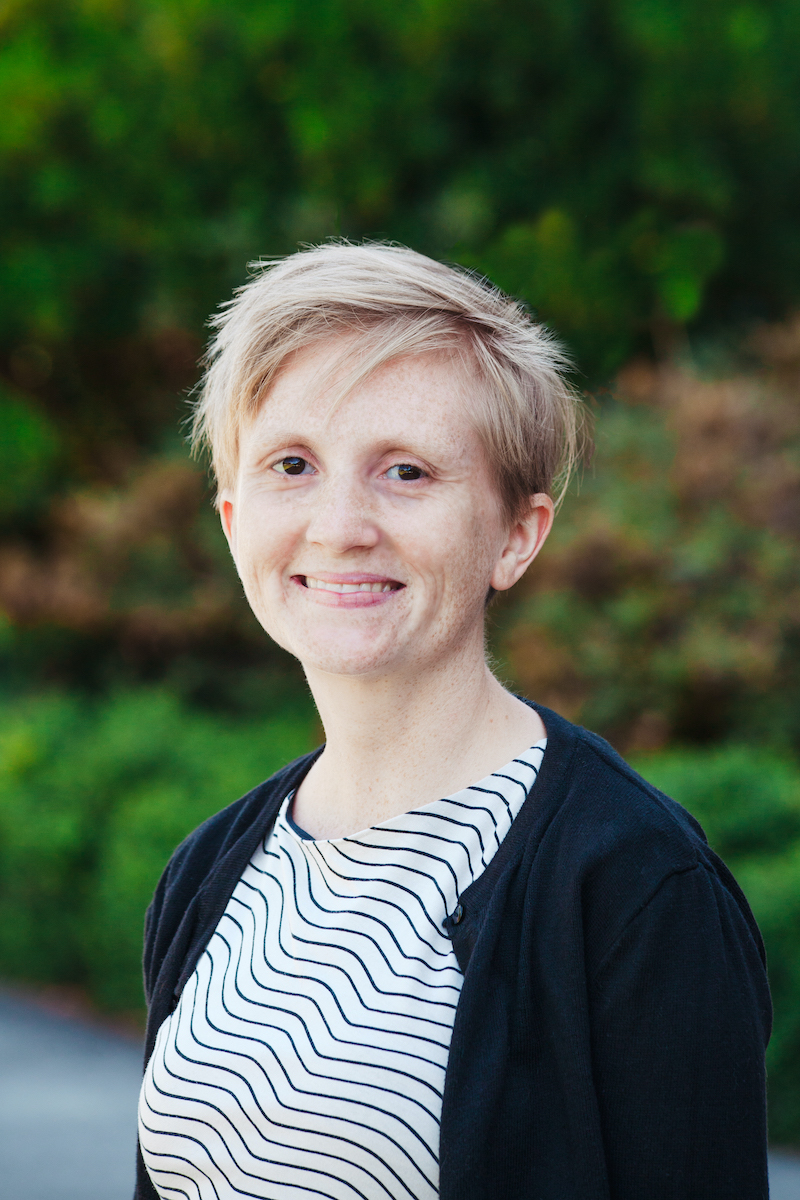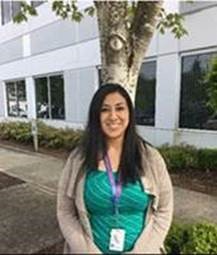Home > PTTC Post Article - August 2020
Authors: Brittany Cooper, Amy Salazar, Lucilla Mendoza, & Sarah Mariani
State policymakers increasingly require that funding be directed toward “evidence-based” programs with demonstrated effectiveness in reducing substance use and related outcomes (Pew-MacArthur Results First Initiative, 2017). This is most often defined as having evidence of positive impacts from at least one published evaluation study using an experimental design. Although the rationale for directing limited resources toward these programs is sound, it also presents challenges – especially for those communities that are not equally represented in existing substance abuse prevention research. This gap is particularly glaring for American Indian/Alaska Native (AI/AN) communities where substance abuse prevention resources are critically needed, and yet research is greatly lacking (Novins, Croy, Moore, & Rieckmann, 2016) leaving communities with few choices for funding evidence-based substance abuse prevention programs that meet their needs.
In 2018, Washington State’s Division of Behavioral Health and Recovery (DBHR) collaborated with researchers at Washington State University (WSU) to work to address this problem. Specifically, DBHR asked WSU to assist help them to work with tribes in WA to compile a list of programs that have been shown to be effective in tribal communities for youth substance use prevention. The goal was to provide recommendations based on the following criteria: 1) strength of evaluation evidence demonstrating a reduction in behavioral health problems and/or effects on related risk and protective factors in AI/AN youth, 2) alignment with culturally-tailored risk and protective factors shown to be related to substance use or mental health outcomes among AI youth, 3) availability of program implementation materials and support, and 4) program implementation capacity and fit with tribal communities in WA. There were four major phases in this project.
Phase 1: Initial List Building
First, WSU reviewed programs from SAMHSA’s Center for the Application of Prevention Technologies (CAPT) report on culturally-informed programs to reduce substance misuse and promote mental health in American Indian and Alaska Native populations using the first three criteria: 1) strength of evaluation evidence demonstrating a reduction in behavioral health problems and/or related risk and protective factors in AI/AN youth, 2) alignment with culturally-tailored risk and protective factors shown to be related to substance use or mental health outcomes in AI/AN youth, and 3) availability of program implementation materials and support. Based on the information contained in the tool, we identified a total of 43 programs with some evaluation documentation to be included in the review process (SAMHSA, 2018a).
This SAMHSA CAPT tool provided information on programs that:
Twenty-nine of these 43 programs had the most promising evidence and did not have any initial implementation concerns and therefore were the focus of this preliminary list.
Phase 2: Tribal Engagement
Second, WSU presented this list to tribal representatives from across the state to gather their feedback and discuss possible implementation challenges (criteria 4). In total, 28 people participated in the meeting. Twenty-two participants were tribal representatives; of those, 9 participated in-person and 13 participated online by webinar. The first task of the meeting involved providing an overview of this project, including an explanation of the previous research conducted by SAMHSA and the tools they developed that informed this work (SAMHSA, 2018a; SAMHSA 2018b). This was followed by an introduction to the preliminary list of 12 programs and a brief overview of each program, including an explanation of its focus, setting, target age range, targeted risk and protective factors, and implementation information. We also highlighted the specific tribes and locations where that program had been developed and/or implemented, and how tribal culture has been integrated. Following this presentation, we conducted a group discussion to explore how participants felt about the programs, what strengths they felt the programs had that would meet the needs of their community, and what challenges they anticipated. After all individual programs had been introduced and discussed, we then facilitated a group discussion activity that allowed participants to more globally explore some of the issues regarding choosing, implementing, and adapting evidence-based programs for tribal communities. Participants first gathered in smaller groups to discuss issues regarding program selection and adaptation; then, we reconvened the large group to discuss the following questions: “In your experiences, what has worked well and what has not worked well when trying to select and/or adapt a program to implement with Native youth and families?”
Some of the most notable themes emerging from the tribal representatives included:
Overall, this discussion gave us insight into the program implementation capacity and fit issues important to consider for tribal communities in Washington State (criteria 3 and 4), and this led us to add some additional information about each program in the descriptions and tables provided to DBHR.
Phase 3: Follow-up with Other Recommended Tribal Partners & Program Developers
Based on feedback from the meeting with tribal representatives and recommendations from DBHR, WSU developed a list of additional programs to assess for potential inclusion on the list. WSU consulted with program experts at WSU and the University of Washington about whether these programs met the criteria of the current project, as well as whether they had additional recommendations for the list building process. Four additional programs emerged from this phase of the project.
Phase 4: List Finalization
Using the additional information gathered in phases 2 and 3, WSU finalized the list to include 16 recommended programs that were: a) developed to address relevant substance use or mental health outcomes in AI/AN populations, b) incorporated cultural elements, traditions or practices, c) aimed to improve one or more of the tribal-specific risk and/or protective factors (SAMHSA, 2018b), d) had at least some evidence from an experimental, quasi-experimental, or pre-posttest evaluation suggesting that the program reduces behavioral health problems and/or related risk and protective factors in AI/AN youth, and e) had implementation materials available to communities wanting to replicate it. This final list reflects input received from tribal prevention providers and other key stakeholders in Washington State. Details on the programs can be found here: https://www.theathenaforum.org/resources-for-providers/tribal-prevention-and-wellness-programs.
Overall, results from this project suggest that policymakers, researchers, and tribal communities must work together to find a balance between maximizing program choice for tribal communities, ensuring that program options have the capability of bringing about meaningful, positive change in tribal communities, and acknowledging the crucial need for more research to build the evidence base for prevention programs appropriate for use in tribal communities.
 Brittany Cooper, Ph.D., is Associate Professor of Human Development, Youth and Family Extension Specialist, and the Director of the Prevention Science PhD program at Washington State University. Dr. Cooper’s research, teaching, and outreach centers around the translation of prevention science for public health impact. For nearly a decade, she has collaborated with federal, state, and other community stakeholders to improve the field’s understanding of how best to support evidence-based prevention programs in diverse community settings. She has published extensively on factors necessary for the successful scale-up, implementation, adaptation, and sustainability of preventive interventions. She currently co-leads the SAMHSA-funded Northwest Prevention Technology Transfer Center which provides training and technical assistance to the prevention workforce in Alaska, Idaho, Oregon, and Washington. She also co-chairs the Washington State Division of Behavioral Health and Recovery’s Prevention Research Subcommittee which brings together prevention researchers, state agency leaders, and local prevention practitioners to discuss how the latest prevention science research can inform prevention practice across WA state.
Brittany Cooper, Ph.D., is Associate Professor of Human Development, Youth and Family Extension Specialist, and the Director of the Prevention Science PhD program at Washington State University. Dr. Cooper’s research, teaching, and outreach centers around the translation of prevention science for public health impact. For nearly a decade, she has collaborated with federal, state, and other community stakeholders to improve the field’s understanding of how best to support evidence-based prevention programs in diverse community settings. She has published extensively on factors necessary for the successful scale-up, implementation, adaptation, and sustainability of preventive interventions. She currently co-leads the SAMHSA-funded Northwest Prevention Technology Transfer Center which provides training and technical assistance to the prevention workforce in Alaska, Idaho, Oregon, and Washington. She also co-chairs the Washington State Division of Behavioral Health and Recovery’s Prevention Research Subcommittee which brings together prevention researchers, state agency leaders, and local prevention practitioners to discuss how the latest prevention science research can inform prevention practice across WA state.
 Amy M. Salazar, MSW, Ph.D., is an Assistant Professor of Human Development at Washington State University Vancouver and a faculty member in the Prevention Science doctoral program. Dr. Salazar’s area of scholarly expertise involves developing and testing interventions for children and youth with or at risk of child welfare system involvement. She is particularly interested in expanding the evidence base for interventions designed to support youth transitioning from foster care to adulthood. She is the author of several peer-reviewed publications on the experiences of youth in foster care, and a Licensed Master’s Social Worker in the State of Oregon.
Amy M. Salazar, MSW, Ph.D., is an Assistant Professor of Human Development at Washington State University Vancouver and a faculty member in the Prevention Science doctoral program. Dr. Salazar’s area of scholarly expertise involves developing and testing interventions for children and youth with or at risk of child welfare system involvement. She is particularly interested in expanding the evidence base for interventions designed to support youth transitioning from foster care to adulthood. She is the author of several peer-reviewed publications on the experiences of youth in foster care, and a Licensed Master’s Social Worker in the State of Oregon.
 Sarah Mariani is a Certified Prevention Professional and currently is the Section Manager overseeing substance abuse prevention and mental health promotion services for the Washington State Division of Behavioral Health and Recovery. Sarah has a strong commitment to serving youth and families in high need communities in all of the Section programs and initiatives. Currently, she focuses on policy development and strategic planning to ensure effective service delivery and outcomes. Sarah is the co-chair for the State Prevention Enhancement Policy Consortium that oversees the State’s five-year Strategic Plan for Substance Use Disorder Prevention and Mental Health Promotion. Additionally, in this role she also serves as Washington State’s National Prevention Network representative and is the NPN President serving as the Vice President for Prevention on the NASADAD Board of Directors.
Sarah Mariani is a Certified Prevention Professional and currently is the Section Manager overseeing substance abuse prevention and mental health promotion services for the Washington State Division of Behavioral Health and Recovery. Sarah has a strong commitment to serving youth and families in high need communities in all of the Section programs and initiatives. Currently, she focuses on policy development and strategic planning to ensure effective service delivery and outcomes. Sarah is the co-chair for the State Prevention Enhancement Policy Consortium that oversees the State’s five-year Strategic Plan for Substance Use Disorder Prevention and Mental Health Promotion. Additionally, in this role she also serves as Washington State’s National Prevention Network representative and is the NPN President serving as the Vice President for Prevention on the NASADAD Board of Directors.
 Lucilla Mendoza, MSW, is from the Pacific Northwest and is a second generation Mexican American with family history of migrant farm workers residing in Washington, Oregon and Texas. Most importantly, she is a mother of a 12 year old daughter, Adama and is close to her mother and two sisters that reside in eastern Washington. Lucilla works with the Washington State Health Care Authority as the Tribal Behavioral Health Administrator with the Office of Tribal Affairs. Lucilla has worked with Tribal governments and Urban Indian health programs throughout her career with Washington State. Prior to joining the HCA through an organizational merger, she worked with the Department of Social and Health Services, Division of Behavioral Health and Recovery. In her work, Lucilla continues to support the Division of Behavioral Health and Recovery on behavioral health programs and their impacts and project opportunities for American Indian/Alaskan Native individuals in WA State. She spent three of those years on the Division’s statewide prevention section in a role that also served as the Tribal prevention liaison and worked on several projects supporting Tribal and urban Indian program prevention programs.
Lucilla Mendoza, MSW, is from the Pacific Northwest and is a second generation Mexican American with family history of migrant farm workers residing in Washington, Oregon and Texas. Most importantly, she is a mother of a 12 year old daughter, Adama and is close to her mother and two sisters that reside in eastern Washington. Lucilla works with the Washington State Health Care Authority as the Tribal Behavioral Health Administrator with the Office of Tribal Affairs. Lucilla has worked with Tribal governments and Urban Indian health programs throughout her career with Washington State. Prior to joining the HCA through an organizational merger, she worked with the Department of Social and Health Services, Division of Behavioral Health and Recovery. In her work, Lucilla continues to support the Division of Behavioral Health and Recovery on behavioral health programs and their impacts and project opportunities for American Indian/Alaskan Native individuals in WA State. She spent three of those years on the Division’s statewide prevention section in a role that also served as the Tribal prevention liaison and worked on several projects supporting Tribal and urban Indian program prevention programs.
Novins, D. K., Croy, C. D., Moore, L. A., & Rieckmann, T. (2016). Use of evidence-based treatments in substance abuse treatment programs serving American Indian and Alaska Native communities. Drug and Alcohol Dependence, 161, 214-221.
Pew-MacArthur Results First Initiative (2017). How States Engage in Evidence-Based Policymaking: A National Assessment. Philadelphia, PA: The Pew Charitable Trusts.
Substance Abuse and Mental Health Services Administration, Center for the Application of Prevention Technologies (2018a). Culturally-informed Programs to Reduce Substance Misuse and Promote Mental Health in American Indian and Alaska Native Populations.
Substance Abuse and Mental Health Services Administration, Center for the Application of Prevention Technologies (2018b). Cultural Factors that Protect Against Substance Misuse and Promote Mental Health in American Indian and Alaska Native Populations.